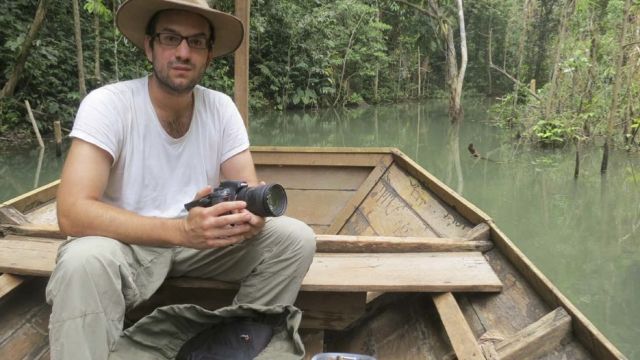Orangutans in the past, now, and in the future

Orangutans are the only extant great apes endemic to Asia. They are large, charismatic, and arboreal primates that have become icons of rainforests and biodiversity conservation in the region. There are three currently recognised species of orangutan, one from Borneo and two from Sumatra. All three species are critically endangered due to massive loss of habitats and anthropogenic conflict. The modern conception of orangutans is at odds, however, with their fossil history.
This presentation will explore some recent advances in orangutan palaeontology, including new fieldwork and laboratory analyses, that shed light on these differences. During the last two million years, orangutans were larger, more widely distributed, and associated with a range of environments that extended well beyond rainforests.
However, these insights continue to be gleaned almost exclusively from isolated teeth, and as a result, the orangutan fossil record remains difficult to interpret. Much remains to be discovered, particularly with respect to orangutan taxonomy, palaeobiology, and extinction. This is important, because a complete appreciation of fossil orangutans is critical to understanding the context of their current threats and informing the strategies in place to conserve them.
Dr Julien Louys has been a vertebrate palaeontologist for 15 years. He completed his training with Bachelors of Science and Mathematics from the University of Newcastle, Bachelor of Sciences (Hons), and a PhD from the University of New South Wales. His PhD addressed the critical question of ecology and extinction of Southeast Asian megafauna. He completed his first postdoctoral research position at Liverpool John Moores University, UK, where he developed novel techniques for reconstructing environments from fossils.
He later worked at the Queensland Museum as curator of Geosciences followed by a University of Queensland Postdoctoral Fellowship. His research continued at the College of Asia and the Pacific, ANU, where he engaged in intensive fieldwork research, surveying the fossil and human record of isolated Indonesian islands. He is currently a Senior Research Fellow at Griffith University, where he explores the Asian mammal fossil record to provide a holistic understanding of interactions between humans and environments, supported by an ARC Future Fellowship.
Location
Seminar Room 2/3 (3.03/3.04), 120 McCoy Circuit, 2600 Canberra
Speaker
- Dr Julien Louys, Griffith University
Contact
- Dr Justyna Miszkiewicz+61 2 6125 9295